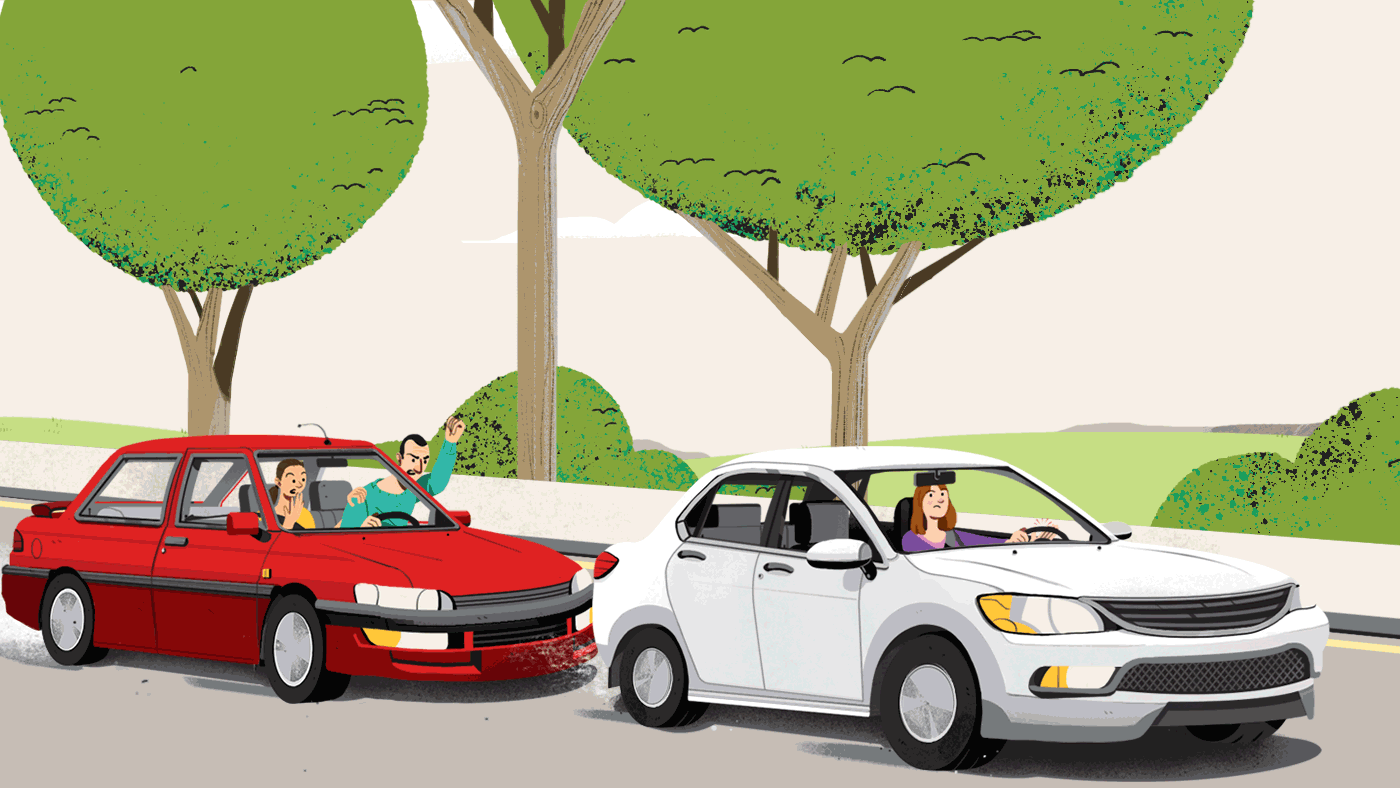Aggressive Driving vs. Road Rage: Are You Crossing the Line?
Before you lose your temper while driving, understand the effects.
 Nathan Hackett
Nathan Hackett
We’ve all been there: A driver makes unexpected lane changes and swerves in front of us and we feel the urge to yell, blow our horn or gesture at them. But unchecked emotions behind the wheel can lead to aggressive driving—or even road rage.
So what’s the difference between aggressive driving and road rage? According to the National Highway Traffic Safety Administration (NHTSA), aggressive driving is operating a vehicle in a way that endangers—or is likely to endanger—people or property. Road rage is the extreme of aggressive driving, when behavior turns angry and violent. These extreme cases can escalate to become a criminal offense.
Here’s how to identify these dangerous habits—and how to prevent them.
Why do drivers get so angry?
Our cars are like metal safe havens: We feel protected in them—and they also help us feel anonymous to other motorists while driving. This anonymity, psychologists say, can lead to more aggressive, less-inhibited behavior. That driver in front of you doesn’t know who you are, the thinking goes, so you’re more likely to lay on the horn if he doesn’t move after the light turns.
When we get mad, we also can feel the urge to teach others a lesson, such as tailgating a slow driver. But focusing on others means that you’re not concentrating on your own driving—and that’s unsafe. This behavior can also lead to car accidents, personal injury or even fatalities.
Safety tips to avoid aggressive driving
- Become a better driver: Use AAADrive on the AAA Mobile app to monitor and score your driving habits, and get advice on how you can improve. Learn about common stressors so you can avoid them.
- Stay considerate of others: Don’t intentionally force another driver to brake or turn in response to something you’ve done.
- Be tolerant and forgiving: Don’t take it personally if the driver of a vehicle is tailgating or honking or cuts you off. The other driver may simply be having a bad day.
- Keep your distance: When drivers are agitated, it’s best to stay behind them—they can do less damage to you this way. If you see reckless driving or another cause for alarm, pull off the road or exit the highway to avoid the angry driver.
- Do not respond: Avoid eye contact and gestures, maintain space around your vehicle and call 911 if you believe you’re in danger. Or, drive to a busy place, such as a mall or gas station. Use your horn to get someone’s attention. This usually will discourage an aggressor and help avoid a road rage incident. Don’t get out of your car, and don’t lead an aggressive driver to your home.